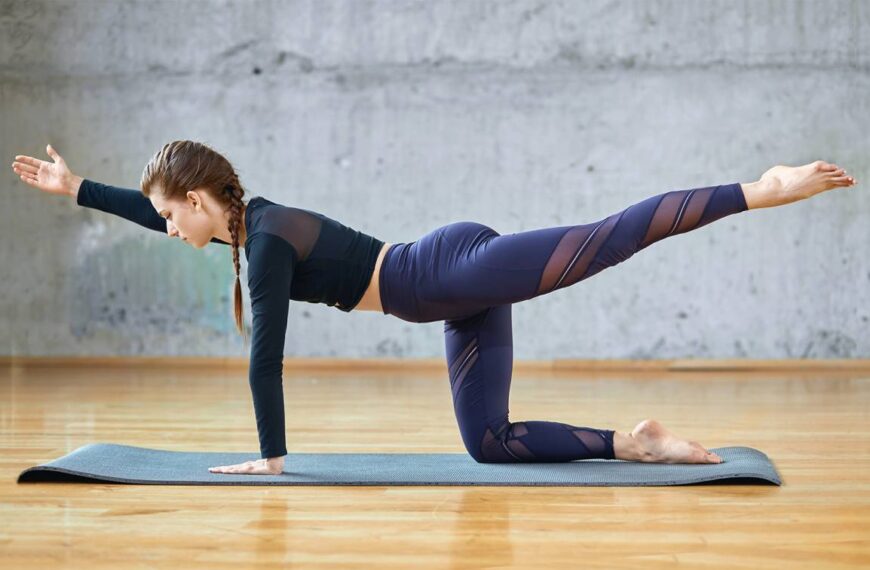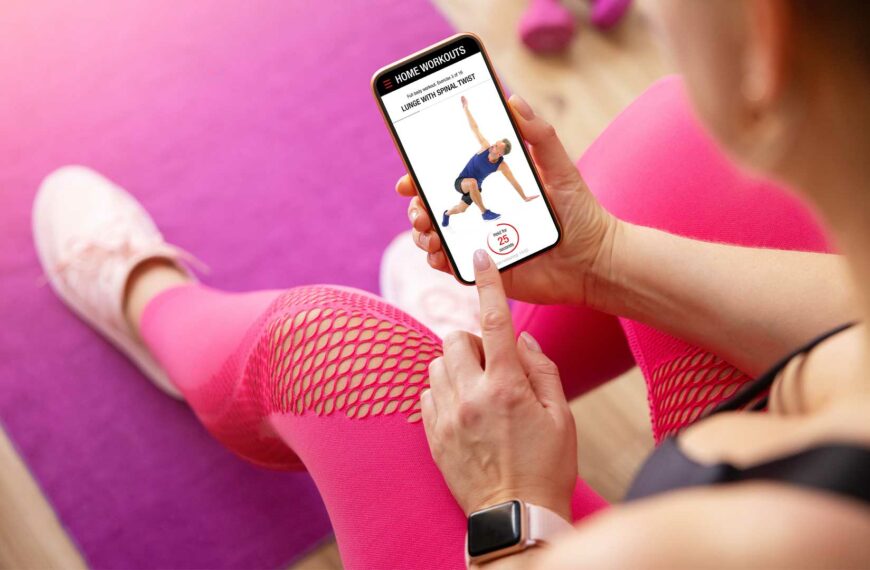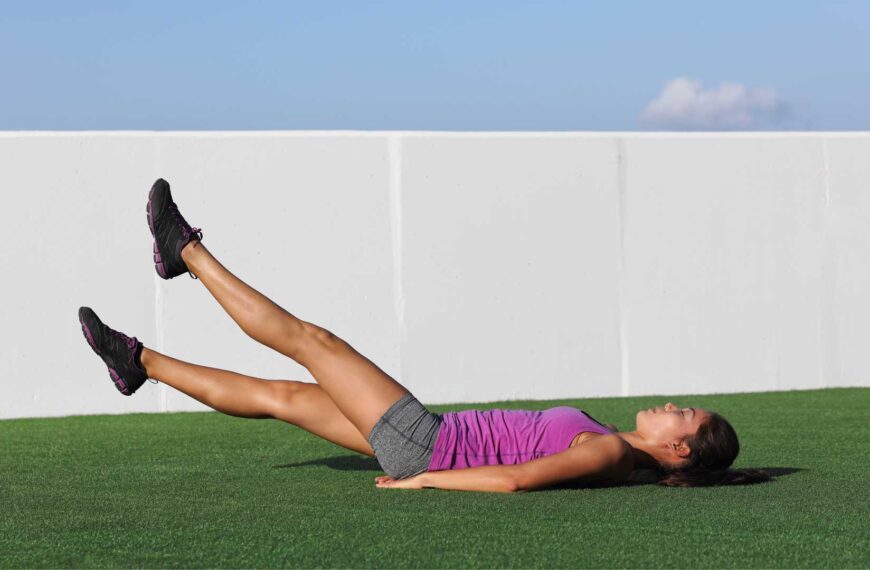When it comes to building a strong core, the knee plank exercise is a powerful tool in your fitness arsenal. This exercise specifically targets your abs, obliques, glutes, and hip flexors, helping you develop a solid foundation of core strength. To reap the maximum benefits from the knee plank, it’s crucial to perform it with proper form and technique.
What you will learn from this article:
- The importance of core strength in fitness and overall health.
- Proper form and technique for performing the knee plank exercise.
- The targeted muscles and benefits of the knee plank exercise.
Use of Merlin App for Knee Plank Exercise
The Merlin App can be an invaluable tool in helping individuals perform the Knee Plank exercise correctly and effectively. Knee Planks are a great way to strengthen the core, improve stability, and reduce the risk of lower back pain. The app’s AI real-time feedback feature plays a crucial role in ensuring that users maintain the proper form and technique throughout the exercise.
When you select the Knee Plank exercise within the app, the AI real-time feedback feature comes into play. As you assume the plank position with your forearms on the ground and your knees on the mat, the app uses its AI algorithms to analyze your posture. It monitors your body alignment, ensuring that your back remains straight and your core is engaged. If you start to arch your back or let your hips sag, the app will immediately provide feedback to correct your form.
The voice feedback component of the Merlin App is particularly helpful during the Knee Plank exercise. It can guide you through the exercise, reminding you to keep your core tight, maintain a straight line from your head to your knees, and breathe properly. This real-time vocal coaching can help you stay focused and motivated while ensuring that you’re getting the most out of the exercise.
Step-by-step instructions on how to perform the knee plank exercise with proper form
- Engage your core by drawing your belly button in towards your spine.
- Slowly extend your legs behind you, one at a time, until you’re in a plank position with your body forming a straight line from your head to your heels.
- Keep your neck in line with your spine and your gaze focused on the floor slightly ahead of you.
- Hold this position for a specified amount of time, starting with 10-15 seconds and gradually increasing as you get stronger.
- Remember to breathe steadily throughout the exercise, inhaling through your nose and exhaling through your mouth.
Importance of engaging the core muscles
To get the most out of the knee plank exercise, it’s essential to engage your core muscles throughout the entire movement. Focus on pulling your belly button in towards your spine and maintaining a strong, stable core. This not only helps you maintain proper form but also maximizes the activation of your abdominal muscles.
Additionally, pay close attention to your spine alignment. Keep your back flat and avoid sagging your hips or allowing your lower back to round. This ensures that you’re effectively targeting the desired muscles and minimizing the risk of injury.
Lastly, don’t forget about your breathing. Inhale deeply through your nose as you lower yourself into the plank position, and exhale slowly through your mouth as you hold the position. This controlled breathing helps you maintain focus and stability throughout the exercise.
Remember, practicing proper form and technique is key to getting the most out of any exercise, including the knee plank. By doing so, you’ll not only optimize your results but also reduce the risk of strain or injury.
Targeted Muscles and Benefits of the Knee Plank Exercise
Muscles targeted during the knee plank exercise
The knee plank exercise is a powerhouse for targeting and strengthening multiple muscle groups simultaneously. The primary muscles worked during this exercise include:
- Abs: The rectus abdominis, commonly known as the “six-pack” muscles, is engaged to stabilize your spine and maintain a straight body position throughout the exercise.
- Obliques: These muscles, located on the sides of your abdomen, help with rotational movements and maintaining stability during the knee plank.
- Glutes: Your gluteal muscles, including the gluteus maximus, medius, and minimus, play a vital role in stabilizing your pelvis and hips.
- Hip Flexors: The muscles responsible for flexing your hip joint, such as the iliopsoas, are activated to maintain proper alignment and stability during the exercise.
Explain how strengthening these muscles improves core stability, posture, and overall fitness
Building strength in these targeted muscles through the knee plank exercise offers numerous benefits beyond just a sculpted midsection. Here are some key advantages:
- Core Stability: A strong core is essential for maintaining stability and balance in everyday activities and sports. The knee plank strengthens the core muscles, providing a solid foundation for all movements and reducing the risk of injury.
- Improved Posture: Weak core muscles can lead to poor posture, resulting in slouching and back pain. By strengthening your abs, obliques, and glutes, the knee plank exercise helps you maintain proper alignment and support for your spine, leading to improved posture.
- Enhanced Athletic Performance: Many athletic movements, such as running, jumping, and lifting, rely on a strong core for power and stability. Incorporating the knee plank exercise into your routine can improve your performance in various sports and physical activities.
- Lower Back Pain Prevention: Weak core muscles can contribute to lower back pain and discomfort. Strengthening these muscles through exercises like the knee plank can alleviate stress on the lower back and promote a healthy, pain-free spine.
By consistently incorporating the knee plank exercise into your workout routine, you’ll not only develop a stronger core but also enjoy the benefits of improved stability, posture, and overall fitness.
Modifications and Progressions for the Knee Plank Exercise
Modifications for individuals with limited mobility or lower back issues
The knee plank exercise can be modified to accommodate individuals with limited mobility or lower back issues. Here are a few modification options:
- Elevated Knee Plank: If kneeling on the floor is uncomfortable, try performing the knee plank with your hands on an elevated surface such as a bench or step. This reduces the strain on your knees and allows you to focus on engaging your core.
- Wall Knee Plank: Stand facing a wall and place your hands on the wall at chest height. Walk your feet back until your body is in a diagonal line, similar to the plank position. This modification reduces the load on your core and allows you to gradually build strength.
Introduce progressions to challenge those who have mastered the basic knee plank
Once you’ve mastered the basic knee plank, it’s time to take your core stability to the next level. Here are a few progressions to incorporate into your routine:
- Straight-Arm Knee Plank: Instead of resting on your forearms, extend your arms and rest on your hands, similar to a traditional plank. This variation increases the demand on your core and upper body muscles.
- Leg Lifts: While holding the knee plank position, lift one leg off the ground and hold for a few seconds before alternating to the other leg. This variation adds an extra challenge by engaging your glutes and hamstrings.
- Arm Reaches: Begin in the knee plank position and extend one arm straight out in front of you. Hold for a few seconds before switching to the other arm. This exercise targets your shoulder stability and further engages your core muscles.
Remember to progress gradually and listen to your body. As you become stronger, increase the duration or repetitions of each progression to continue challenging your core muscles.
By incorporating modifications and progressions, you can customize the knee plank exercise to your fitness level and continuously challenge yourself.
Common Mistakes and How to Avoid Them
Identify common errors made during the knee plank exercise
While the knee plank exercise is highly effective for strengthening your core, it’s essential to be aware of common mistakes that can compromise its effectiveness. Some common mistakes include:
- Sagging Hips: Allowing your hips to drop towards the floor is a common mistake during the knee plank. This not only takes the focus away from your core but also places unnecessary stress on your lower back.
- Rounded Back: Allowing your upper back to round or your shoulders to hunch forward can lead to poor posture and reduced engagement of the core muscles.
- Lifting the Buttocks: Raising your buttocks higher than your body creates an imbalance and reduces the effectiveness of the exercise.
Provide tips on how to correct these mistakes and maintain proper form
To ensure you’re getting the most out of the knee plank exercise, follow these tips to maintain proper form:
- Engage Your Core: Focus on pulling your belly button in towards your spine throughout the exercise. This helps stabilize your spine and maintain a neutral position.
- Maintain a Straight Line: Imagine your body as a straight line from your head to your heels. Avoid sagging or lifting your hips, and keep your back flat to engage the correct muscles.
- Keep Your Shoulders Stable: Avoid rounding your upper back or hunching your shoulders. Instead, maintain a stable and aligned position throughout the exercise.
By being mindful of these common mistakes and maintaining proper form, you’ll maximize the benefits of the knee plank exercise and reduce the risk of injury.
| Common Mistakes | How to Correct |
|---|---|
| Sagging Hips | Engage your core and focus on maintaining a straight line from your head to your heels. |
| Rounded Back | Keep your shoulders stable and avoid rounding your upper back. Maintain a straight line from your head to your heels. |
| Lifting the Buttocks | Keep your hips in line with your body and avoid raising your buttocks higher than the rest of your body. |



